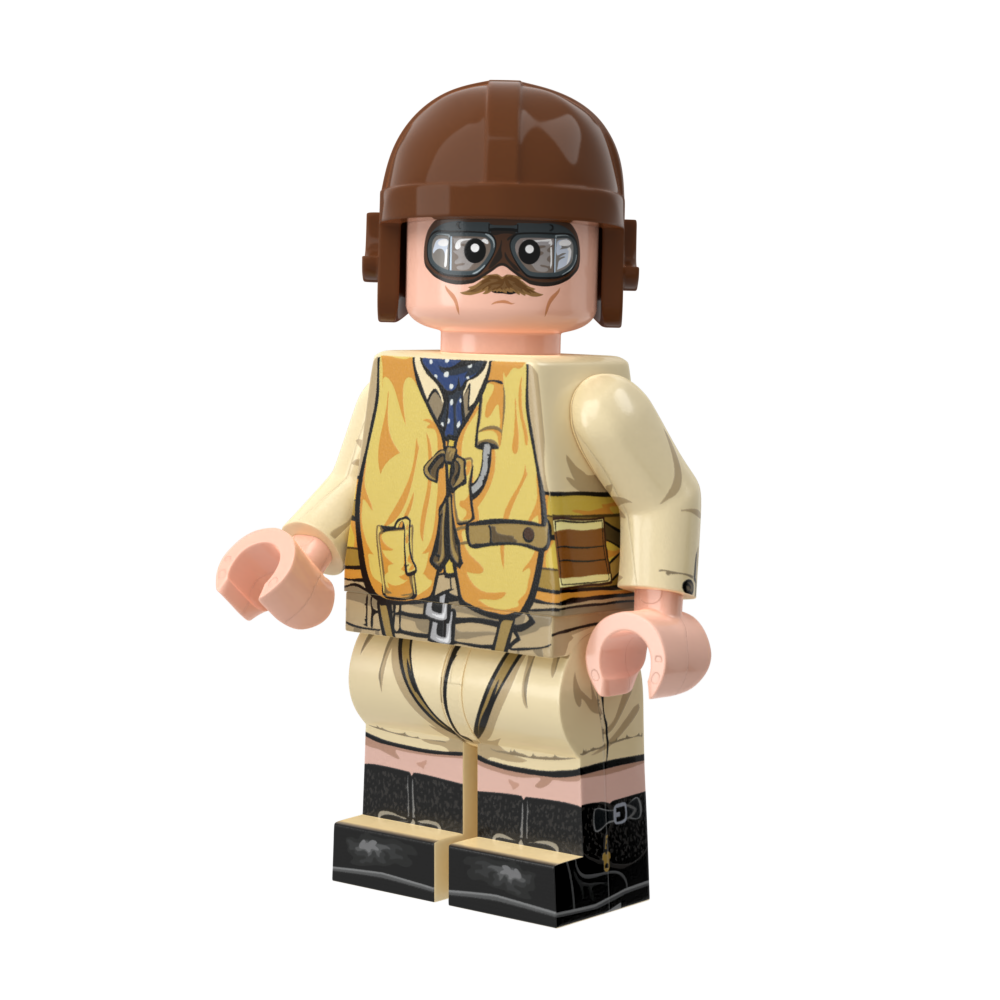About the Hawker Hurricane Mk IIc Trop - British WWII Fighter-Bomber:
The British Royal Air Force (RAF) possessed some of the most recognizable and exceptional aircraft of World War II. One of the most iconic was the Hawker Hurricane Mk IIC. The Hurricane, along with the Spitfire, are recognized for their daring flying against the Third Reich during the Battle of Britain in the summer of 1940. Their prowess, coupled with the skill of British (and even Americans, who came across the pond as volunteers) were able to turn back the tide of the undefeated German Blitzkrieg. The battle itself, combined with Hitler’s reckless abandon, ultimately sealed the fate of Germany, as Hitler’s impatience turned away from the British Isles, and instead launched Operation Barbarossa against the Soviet Union.
The Hurricane is an important piece of British aviation history. Foremost, it was the nation’s first monoplane fighter as well as the first British plane to exceed 300mph. Hawker’s Chief Designer, Sydney Camm, quite literally flew against conventional aeronautical thought of the mid-1930s. During that time, monoplanes were unstable and too radical of a design to dogfight in the air—biplanes had better maneuverability and were the safer option—or so people thought. Camm knew that the days of biplanes were coming to a head. Simply, the added wing created more drag, meaning they would never fly as a fast as a monoplane. In 1933, Camm and his team set to work at Hawker. They started by modifying the successful Hawker Fury biplane. They stripped the second wing, enclosed the cockpit, gave it retractable landing gear, and a new powerplant that was the forerunner to the Rolls-Royce Merlin engine. The design prototype was submitted and in February of 1935 the revolutionary airplane was given approval by the British military. During the prototyping stage, a new specification was added—8-US licensed Browning machine guns in .303 British were to be schemed instead of the usual 4. The final resolution was that of the engine. Several models from Rolls-Royce were used, including early models of the Merlin. Finally, a Merlin III pushing 1,030 horsepower was selected and proved the most satisfactory. On June 3, 1936, Hawker received an unprecedented order for 600 aircraft by the RAF. In December of 1937 the first RAF squadron converted to the new fighter, turning in their dated Gloster Gauntlet biplanes.
All of this was occurring at a time when Germany was expanding. The restrictions imposed onto them by the Treaty of Versailles were thrown to the wayside by Hitler. He was rapidly expanding and building the German war machine, while moving into former German territories stripped from them by the Treaty. Britain and other European nations watched tepidly, giving into many of Hitler’s demands in hopes of avoiding war. But with Germany’s invasion of Poland in September of 1939, war began. The Hurricane drew first blood for the RAF over the skies of France, taking down a German Dornier Do 17 bomber. During the Battle of Britain, Hawker witnessed the shortcomings of their plane compared to the German Bf 109. The engineers at Hawker went to work modifying and updating. First, they increased engine power by going with the Merlin XX, which upped the horsepower to 1,280. Next armament was looked at. The IIB variant added four .303 machineguns to the existing eight, but that was not enough. The IIC variant forwent the .303 machinegun and instead added four 20mm Oerlikon cannons. Other theater specific modifications included Vokes filters to protect the ventral radiator and oil cooler from sand and dust that proved detrimental in the North Africa campaigns. The Hurricane served the British in all theaters, and much like the Mustang and Spitfire, the Hurricane proved to be one of the most important Allied fighters of the war.

Model Statistics:
Designed by Team Brickmania
527 LEGO®, Brickmania®, & BrickArms® elements
1x custom minifig
Custom printed elements
Full-color printed building instructions
1/35th scale to match other Brickmania kits
Intermediate Skill Level (4-6 years building experience recommended)
All Brickmania® model kits are made of new-condition LEGO® bricks. This model comes disassembled and includes complete printed building instructions. This is a limited-edition kit and production may be discontinued at any time.
This is not a LEGO® Product. LEGO and the LEGO minifigure are trademarks of the LEGO Group, which does not sponsor, authorize or endorse this product. The LEGO Group is not liable for any loss, injury or damage arising from the use or misuse of this product.










